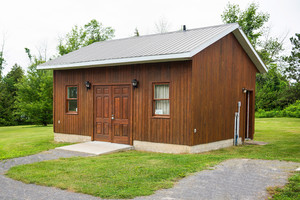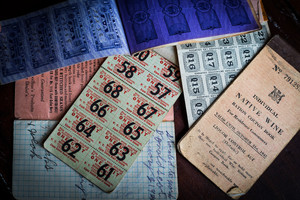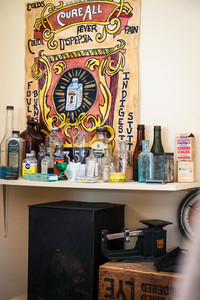
Alex Staye Building (the General Store)
Alex Staye Building (the General Store)
The general store was often the first business (and possibly the only business) in settling communities. As expected, they sold a wide variety of locally made items. Additionally, since many communities were too small for a bank, the storekeeper would often loan money and safeguard many important documents for customers. The general store truly was a jack of all trades.
Shown in one of these images are rationing books from WW2. By 1942, food supply was low. Canadians not only had to feed their own soldiers, but British soldiers as well. In order to keep food on the table, many communities grew their own “Victory Gardens”. The government created Canada’s Official Food Rules (now Canada’s Food Guide) to help citizens keep track of their nutrition. The guide, of course, did not help anyone actually procure the proper food groups, but at least now they knew what they were missing.
Among the first of the foods to be rationed was sugar. Tragically for wine moms everywhere, this significantly affected distilleries, with many having to shut down and convert into military production. Beer, on the other hand, was in ample supply. Still, some called for a prohibition, complaining that any alcohol would decrease productivity. The drinking public rebutted, claiming a drink with the boys was a good way to relax in the stress of war. Amazingly, this argument actually kinda worked. In the end, beer was watered-down and rationed, but not altogether prohibited. Perhaps the government predicted that it would just be bootlegged anyway, as was done in WW1.
Food and drink were not the only things to be rationed. Gasoline rationing began in April 1942 after failed attempts to decrease consumption via propaganda. Still, creative individuals made due, as demonstrated by the plethora of reports of gas siphoning from the 1940’s.


